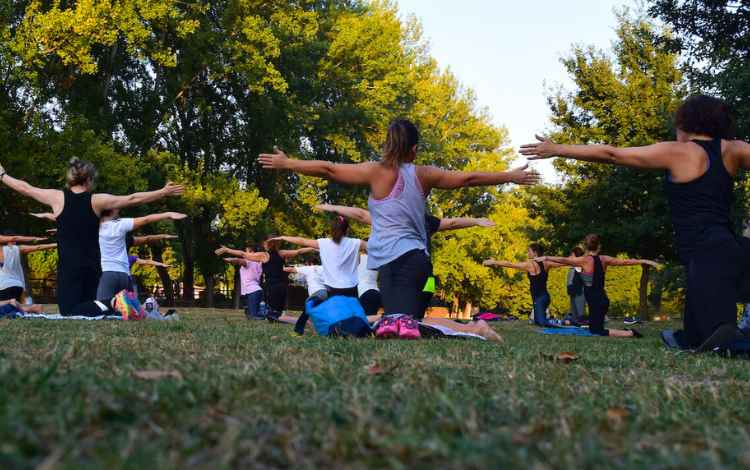
Yoga retreats can be a fun and transformative experience for everyone involved. However, to achieve the best results, organizers must plan and carefully consider all the factors involved to make the experience satisfying.
According to Vajra Jahra – Costa Rica Yoga Retreat Center organizers, even your first yoga retreat itinerary can succeed if carefully planned. Here are some essential tips from organizers that you should consider for your next yoga retreat.
Define the Retreat Objectives
Every retreat, regardless of its theme, must have clear objectives so that participants know what to expect. This way, organizers can more easily design a cohesive itinerary that aligns with the established goals.
Browse our online courses on meditation, positive thinking, overcoming procrastination, confidence, and freedom from distractions.
For example, some yoga retreats focus on self-discovery, relaxation, fitness, or a combination of these elements. Clearly define the retreat objectives and deliver what you promise to the participants because once you tell them what it’s going to be about, they will have high expectations!
However, don’t try to promise more than what you can deliver. Instead, to make the experience even more memorable, you can keep some elements as a surprise. When you promise less but deliver more, participants will have a good time when you surpass their expectations.
What matters is that the retreat objectives complement each other. For example, if you focus only on fitness sessions, some participants may not consider the retreat a vacation. Although a retreat isn’t necessarily a vacation, it must feel like it.
To avoid making participants feel as if they are working when doing fitness sessions, implement relaxation sessions as well, or other elements that don’t require extensive mental or physical work. Keep a balance between everything so that your participants can enjoy various experiences.
If you connect with your yoga students or teachers through social media, consider asking them relevant questions, such as what they would like to do at the retreat.
Evaluate their needs, prioritize them, and get a general sense of the retreat costs based on the information based on the participants, teachers, activities, and location.
Balance Yoga Sessions and Free Time
Although those who are passionate about yoga will be intrigued by the retreat, that doesn’t mean that you should focus solely on yoga sessions. Strive for a balanced schedule between yoga sessions, free time, and workshops.
You will keep your participants engaged and entertained and also offer them free time to immerse themselves in the experience, connect with the surroundings and people, and explore.
You can further facilitate these aspects by providing your participants with opportunities for connection and creating a sense of community. Plan some group activities outside the yoga sessions. Let participants share a meal together and engage in group discussions and other social events.
Some outdoor activities or excursions are more than welcome if your retreat is in a picturesque location. However, ensure that they align with the theme of your retreat. For example, you shouldn’t book a yoga session outdoors and then go to the city for a night out with the participants since that would negatively impact the retreat’s overall vibe.
Instead, focus on aligning all the activities in the retreat’s location or surrounding areas while maintaining a suitable atmosphere that aligns with the yoga teachings.
Consider Skill Levels and Preferences
Not everyone participating in your yoga retreat will have the same skill level or preferences. Take these aspects into account and mitigate them by offering a variety of yoga classes and workshops.
Some should be suitable for beginners and others for more experienced practitioners. You can provide different styles of yoga that suit different people and their needs. It’s important that no one is left out or feels out of place while at the retreat.
Although you will not have time to socialize properly with all the participants involved, if the group is big, try to speak to each member and gauge their mood. You can learn a lot for your next yoga retreat from your current one if you socialize with the participants.
Include Meditation and Mindfulness Practices
You should include meditation and mindfulness practices in your itinerary. They will complement the yoga sessions and help participants focus, reflect, and cultivate inner stillness.
To enhance the experience even further, if the retreat location allows it, do some sunrise or sunset meditation sessions where scenic locations can enhance the experience. However, remember that not everyone is an early bird.
If you include these practices in your retreat, ensure that they are easily accessible to everyone. You can do sunrise meditations one day and sunset meditations another day. This way, you will ensure that more people will participate in these mindfulness practices.
Don’t pack each retreat day with various events because it might become tiresome, not just for the participants but for you and the other organizers as well.
Offer Workshops and Wellness Activities
There are several workshops and wellness activities related to yoga and holistic well-being that you can include in your retreat to enhance the experience and make it even more memorable.
Consider including sessions on Ayurveda, breathing exercises such as the pranayama, and discussions about nutrition and sound healing, or include nature walks, for example. These experiences can promote a greater understanding and practice of yoga beyond the mat and foster passion and interest.
Lastly, if participants simply enjoy solitude, let them have their personal time. They will engage in your activities when they are ready. Do not force anything, and let things occur naturally.
Find a Suitable Yoga Retreat Location
There are plenty of yoga retreat locations around, and each of them has its special features. Find a suitable location to meet your customer’s requirements and see which activities can be implemented.
Some locations offer better deals to organizers than others based on how many days the retreat will last and the number of participants. If the location you have found aligns with your goals and intentions and those of your yoga students, then make the reservations accordingly and on time.
Some of the best yoga retreat locations have various amenities, such as a spa, various outdoor facilities, and other features. When you choose the location, remember to browse through the reviews to learn more about it to see if it’s worth it.
Calculate Costs and Market Your Retreat
A successful yoga retreat will result in satisfied customers and a great sense of accomplishment. However, you need to ensure that the costs are appropriate and that you make a profit.
Analyze retreats similar to yours and learn how much people are willing to pay for such an adventure. Once you find out, calculate the fixed costs so your clients know what to expect. Consider factors such as:
- Hotel costs
- Travel costs
- Yoga classes and other activities
- Food
Once you know the fixed costs, consider that you will need a small budget to market your retreat and travel expenses, and if you want to make some money for yourself, you will need to increase the price further.
To decrease some of the financial risks of the retreat, do not offer a short-term cancellation option to attendees. If people back out at the last moment, you shouldn’t have to pay from your own pocket.

